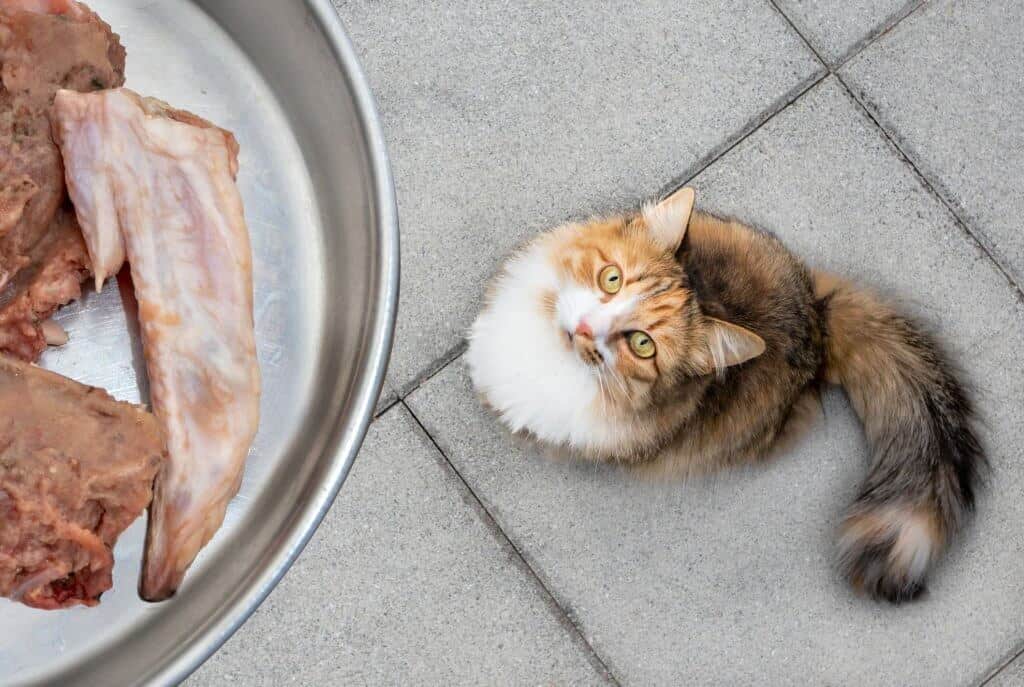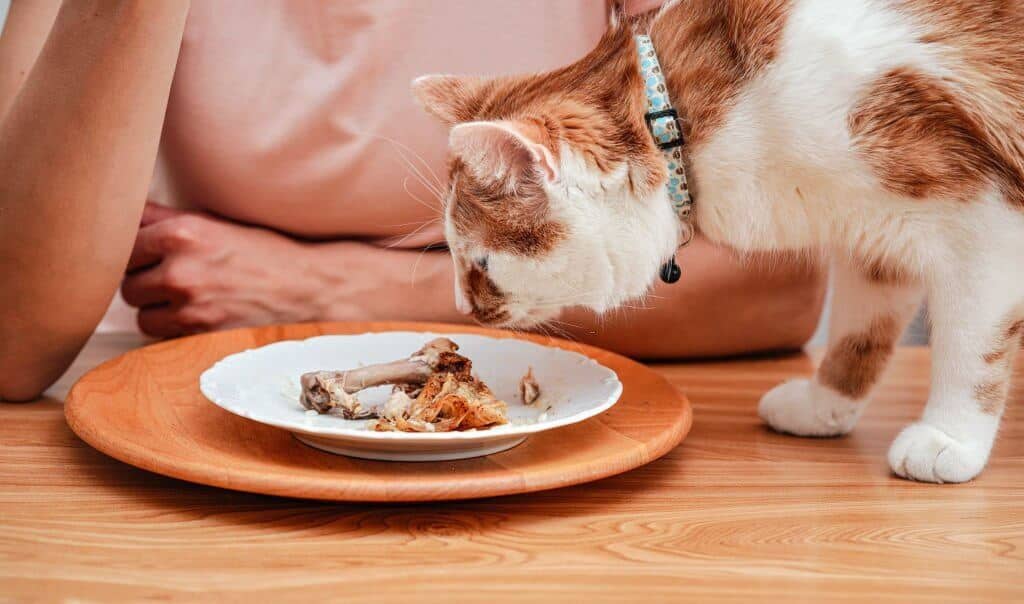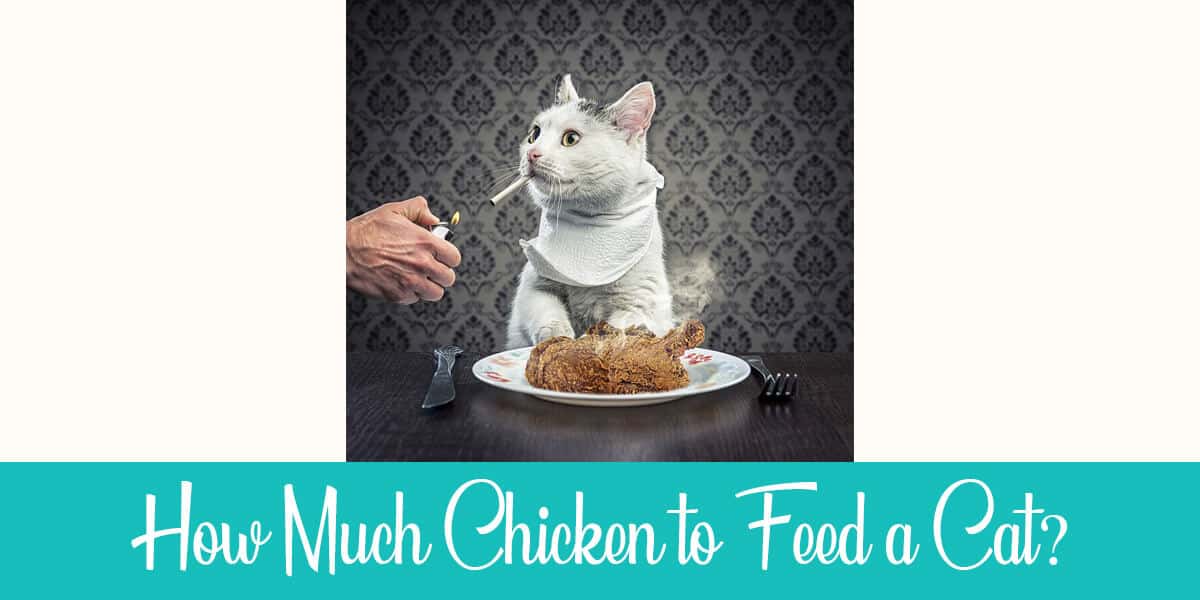Cats; almost everybody loves the furry rascals! Their owners usually want to get everything they need, and, of course, keep them healthy with a buffet of different food options.
While, stereotypically, we’ve grown up learning that cats love fish and drink milk, they, in fact, like to eat a lot of different things.
They have a healthy inclination for chicken, which is why when you order your favorite fast-food fried dinner, you’ll probably see your little friend sitting next to you meowing for a piece.
How much chicken to feed a cat, though? What are the best ways to cook chicken for your cat? And what about chicken bones?
We know these questions must be going through your mind, so in this article, we highlighted all you need to know about whether or not you should be giving your cat any chicken and what you should look out for if you’re planning to.
Table of Contents
How Much Chicken to Feed a Cat?
You can give your cat a small part of the breast or thigh without any problems. Just be sure the chicken is cooked—preferably boiled—and that it’s both boneless and spiceless. Note also that dark meat, like the thigh part of the chicken, offers the most nutritional value.
Can I Feed My Cat Chicken?
Yes, you can! Cats are carnivores and they love meat. That said, you should consider how you serve the chicken to your pet.
Can I Feed the Cat Raw Chicken?

Unfortunately, domesticated felines have evolved to not being able to digest uncooked food well, which can lead to avoidable digestive issues.
Raw chicken is toxic for humans and cats alike as it has a dose of bacteria and parasites that can have deadly consequences.
No matter how much you wash or freeze the chicken, it won’t be able to kill the potentially-lethal bacteria such as Salmonella or E. coli.
That being said, if you’re going to give your cat chicken, it has to be cooked.
My Cat Ate a Piece of Raw Chicken! What Should I Do?
First, you need to monitor your cat. Check if there are serious changes in its behavior, which might include the usual suspects, like diarrhea, not eating, vomiting, or a fever.
If any of the aforementioned signs start to appear, you need to go to the vet to do some tests and make sure of the source of infection.
Must Read:
– Do Horned Paws Hurt My Cat?
– Potassium chloride Importance in cat food
How Do I Cook Chicken for My Cat?
While humans can have the luxury of choosing between barbecued, fried, or rotisserie chicken, the one best suited for cats is of the boiled variety.
Spices, oils, marinations, and toppings are factors that need to be taken into consideration because cats’ digestive systems are not well suited to handle them, which will cause problems when ingested.
The best and safest offering you can give your cat is just boiled chicken without any spices or marinations. The boiling process also removes the fat and offers lean meat filled with protein.
Also Read: Is it okay to lock my cat out of my bedroom at night?
What Part of the Chicken Is Best for My Cat?
A chicken breast is a fine place to start, as it offers a protein-filled option that is also low in both sodium and fat.
Another good alternative on the menu is the thigh, which is a darker piece of meat, and one that has taurine in it, too.
What Is Taurine? And Why Is It Important?
Taurine is an amino acid that cats need but can’t produce on their own.
This important supplement is found in animal-based proteins like meat, chicken thighs, turkey thighs, and fish.
It is required in a well-rounded diet, as a taurine deficiency in cats can cause health issues that affect their sight, heart, and digestive system.
What About Chicken Bones?

While we’ve all seen the cat Tom from ‘Tom & Jerry’ gnawing at a bone in the cartoons, chicken bones are, unfortunately, also dangerous for felines for a few reasons”
- Chicken bones are considered to be a choking hazard and can cause damage to a cat’s throat.
- If a cat bites and breaks a piece, it can form splinters with sharp and jagged edges that could puncture or cut into the kitty’s digestive tract.
How Much Chicken Should I Serve My Cat?
While chicken is definitely a tasty meal for our pet furballs, it’s not one they can live on solely.
Chicken should be considered as a treat and provided once or twice a week. A sliced-up part of the breast or the thigh (for more nutritional value) should be enough for them to enjoy.
Why Can’t I Give My Cats The Same Chicken I Eat?
That’s because the chicken we get from fast food places or cook for ourselves is usually spiced heavily and mixed with other ingredients such as onions and garlic, both of which are poisonous for cats.
If you’re still worried about preparing chicken for your cat yourself, there are several wet and dry food options that have chicken flavor in them, which will satisfy your cat’s palate.
Wrapping Up
Chicken is an excellent source of low fat/sodium lean animal-based protein, and cats, like us, absolutely enjoy eating it.
That said, it’s fine for your furry friend to have some in moderation. Just make sure that it’s cooked well without any oils, marinations, or spices, and absolutely boneless.
Remember, if you want to offer an extra boost in nutritional value serve your cat dark meat as it has that sweet taurine amino acid that their bodies need.
If your cat eats a piece of raw chicken, monitor them and look out for any signs that show that the cat is in distress, should they appear, take your cat to the vet for tests.
Still unsure of what to offer your cat when it comes to food? You need to refer to your vet! Vets can carry out some tests and give you the best suggestions as to what your cat needs based on its breed, age, and size.

I’ve been living with cats since 2008 and I can confidently say I have more feline friends than humans lol. I currently live with 5 cats in different life stages; two of them are less than one year old, one is 2-ish years old and the oldest two are 9-ish years old. I’ve developed a strong bond with cats over the years and I’m eager to share my experience through this blog. You can learn more about my cats here.


